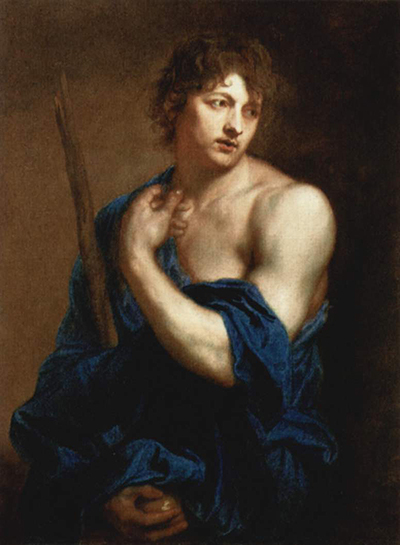Anthony van Dyck had returned from his extended spell in Italy under a new influence of the work of Titian
The Shepherd Paris was produced upon his return and clearly shows such an influence on his style. In approaching his late twenties, the artist was starting to become the complete artist, finally finding a style that he could call his own. Prior to this, the tutorship of Peter Paul Rubens had always loomed large.
The scene found in this painting depicts Paris during the Judgement of Paris. He must hand a golden apple to his one of three goddesses, whichever he considers most beautiful. Typically, this story would be depicted by artists with a strong focus on the three women, but Van Dyck chooses a different route here, picturing just Paris himself.
You will see just how unusual this decision was when viewing other famous paintings of the Judgement of Paris, such as those by Lucas Cranach the Elder, Peter Paul Rubens, Claude Lorrain, Antoine Watteau and Paul Cezanne. The scene has also been captured in a variety of other mediums over a variety of art periods, including sculptures, engravings and tapestries.
The Shepherd Paris is a part of the Wallace Collection in London and has been under different ownership in the UK since the early 19th century. Prior to that it was owned by the Marquis de Voyer d’Argenson but its ownership before that is unclear. For many years it was believed that this painting was actually another Van Dyck self-portrait but this has been disproved over more recent times.
The Wallace Collection itself has a fine selection of paintings, antiquities and furniture at its location in central London. Amongst the highlights are The Lady with a Fan by Diego Velazquez, The Swing by Jean-Honore Fragonard, The Rainbow Landscape by Peter Paul Rubens plus others by Francois Boucher, Jean-Antoine Watteau and Frans Hals.




